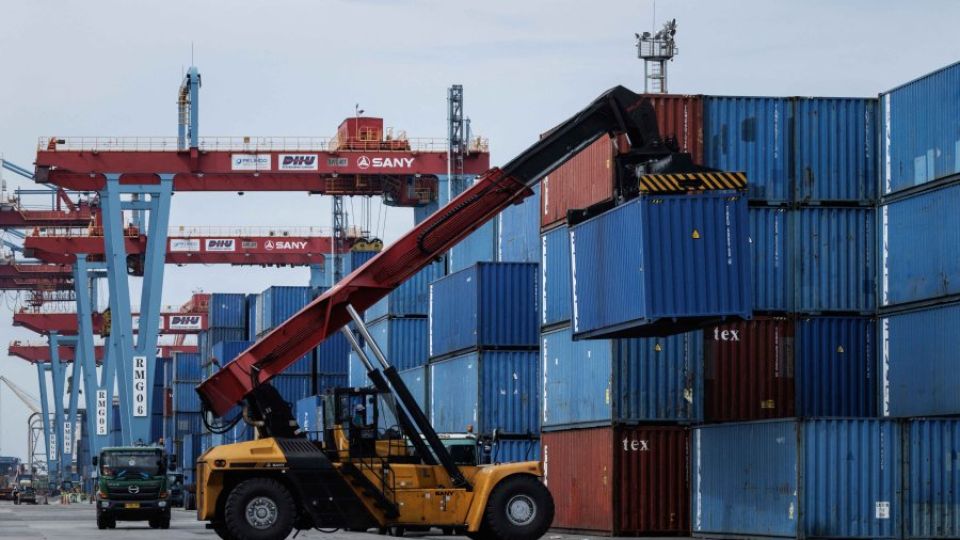February 13, 2025
JAKARTA – Indonesia continues to pitch itself as an alternative location for export-focused factories as the United States piles pressure on China with increased tariffs, but experts say the benefits of the so-called China+1 strategy are waning as global trade undergoes a seismic shift.
US President Donald Trump slapped another 10 percent tariff on Chinese goods last week under his “America First” agenda, forcing companies to rethink supply chains and manufacturing locations.
For years, multinational companies had considered a diversification away from China into other emerging markets as the best way to mitigate the impact of US tariffs directed at Chinese imports.
“This has benefited several countries in the region in the past, especially Vietnam and also Indonesia, but this may soon start to slow,” said Jayant Menon, a senior fellow at the ISEAS Yusof Ishak Institute, a Singapore think tank.
However, Menon told The Jakarta Post on Tuesday that the US had shifted from targeting goods “Made in China” to those “Made by China”, and if these measures expanded, it would impact Chinese foreign direct investment (FDI) aimed at bypassing US duties.
US tariffs would also ripple through supply chains, leading to decreased output and employment in the local economy, especially in sectors reliant on China, he added.
Other types of foreign investment in Indonesia, meanwhile, might remain unaffected, Menon pointed out, particularly investment driven by rising costs in China or demand for raw materials like critical minerals, which could open opportunities for Indonesia, coupled with foreign firms in China seeking to diversify their operations.
The government has reiterated its desire for investment from Chinese manufacturers looking to evade US tariffs by relocating and setting up factories in third countries with a view to exporting to the US market.
Deputy Industry Minister Faisol Riza said in January that the US tariffs threat against China would likely push Chinese firms to move production to Southeast Asia to maintain access to American consumers.
Jakarta’s hopes rest particularly on Batam Island’s Special Economic Zone (SEZ), a free-trade zone located close to Singapore.
The National Economic Council (DEN) echoed that view, with DEN member Chatib Basri noting that factories might relocate not only from China but also from Vietnam, which has benefited from China+1 like no other country in the region.
If Hanoi became “oversaturated with Chinese investment”, the economist suggested, Indonesia might absorb the spillover.
“There have been simulations, and the calculations show this [China +1 strategy] could be advantageous for Indonesia, but only if reforms are in place,” Chatib said at the State Palace on Feb. 6, referring to boosting Indonesia’s industrial competitiveness by streamlining permit procedures.
Today, Indonesia fails to match Vietnam’s competitiveness, business environment and policy ecosystem, according to Muhammad Habib Abiyan Dzakwan, a researcher with the Centre for Strategic and International Studies (CSIS) in Jakarta.
A bolder second Trump administration is reshaping global trade dynamics by pushing for investment directly into the US, or “reshoring”, in a departure from the Joe Biden-era concepts of “friendshoring” and “nearshoring”.
Under these conditions, courting Chinese investment would be tougher, as Washington is tightening its trade rules to impose tariffs not only on China, but also on nations hosting relocated Chinese factories, to close a key tariff-dodging loophole.
That shift was forcing multinationals to “abandon” the China+1 strategy, thereby complicating efforts of countries like Indonesia to pitch themselves as alternative locations, Habib explained.
“The government needs to adjust its approach to attracting foreign investment, given how much the world has changed compared with a year ago,” Habib told the Post on Monday.
The challenges in accessing the US market meant Jakarta would need to maximize opportunities through free-trade agreements with countries like Australia and Canada, while also seeking greater access to the European Union via the planned Indonesia-EU CEPA deal, he added.
Chris Humphrey, executive director of the EU-ASEAN Business Council (EU ABC), told the Post on Wednesday that European companies viewed Southeast Asia as the world’s most promising economic opportunity and current global geopolitical shifts only heightened interest in the region.
“ASEAN has a lot going for it in supply chain diversification, but EU companies aren’t just investing for exports, they’re also targeting local markets, driven by Southeast Asia’s strong economic growth” Humphrey added.
In 2024, China and ASEAN remained each other’s top trading partners for a fifth year running, with trade volumes growing 9 percent year-on-year (yoy).
China has been Indonesia’s number one trading partner for more than a decade and has also been one of the largest sources of incoming foreign direct investment for years.
Increasingly intra-Asia trade
Experts argue that Indonesia needs to diversify its trade ties in the changing global landscape, even if that means relying more on intra-Asia trade.
Goh Puay Guan, associate professor at the National University of Singapore (NUS) Business School’s Department of Analytics and Operations, said on Tuesday that luring manufacturing investment from China would remain part of a broader supply chain diversification, as firms weighed tariffs, sourcing alternatives and market access, but “with a growing domestic focus.”
“Supply chains are still evolving and fragmenting, with varied setups for different markets,” Goh noted, adding that Indonesia’s advantage lay in its manufacturing sector serving both export and domestic markets, reducing FDI diversification risk.
That also means that FDI in manufacturing would increasingly target the country’s large domestic market and Asia-focused trade as supply chains became more regionalized.
Menon of ISEAS said Indonesia should not abandon its China+1 strategy despite US policy toward China.
While he acknowledged the risks, he said he believed the US was unlikely to target Indonesia in the way it was targeting Vietnam, which is currently under scrutiny over its large surplus in bilateral trade with the US.
“While individual firms might face penalties for transshipping Chinese goods via Indonesia, the country as a whole is unlikely to be subject to new tariffs,” Menon added.


